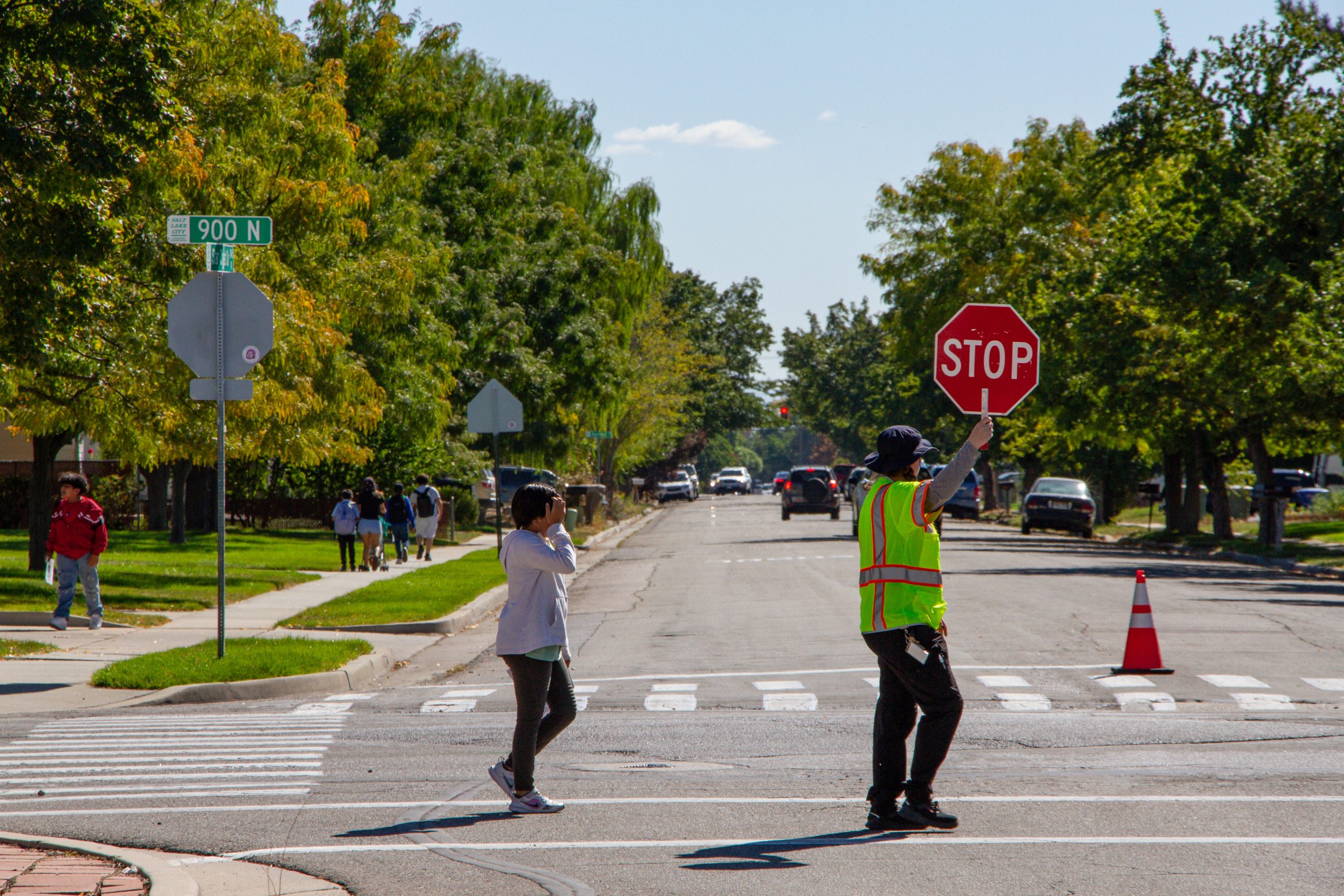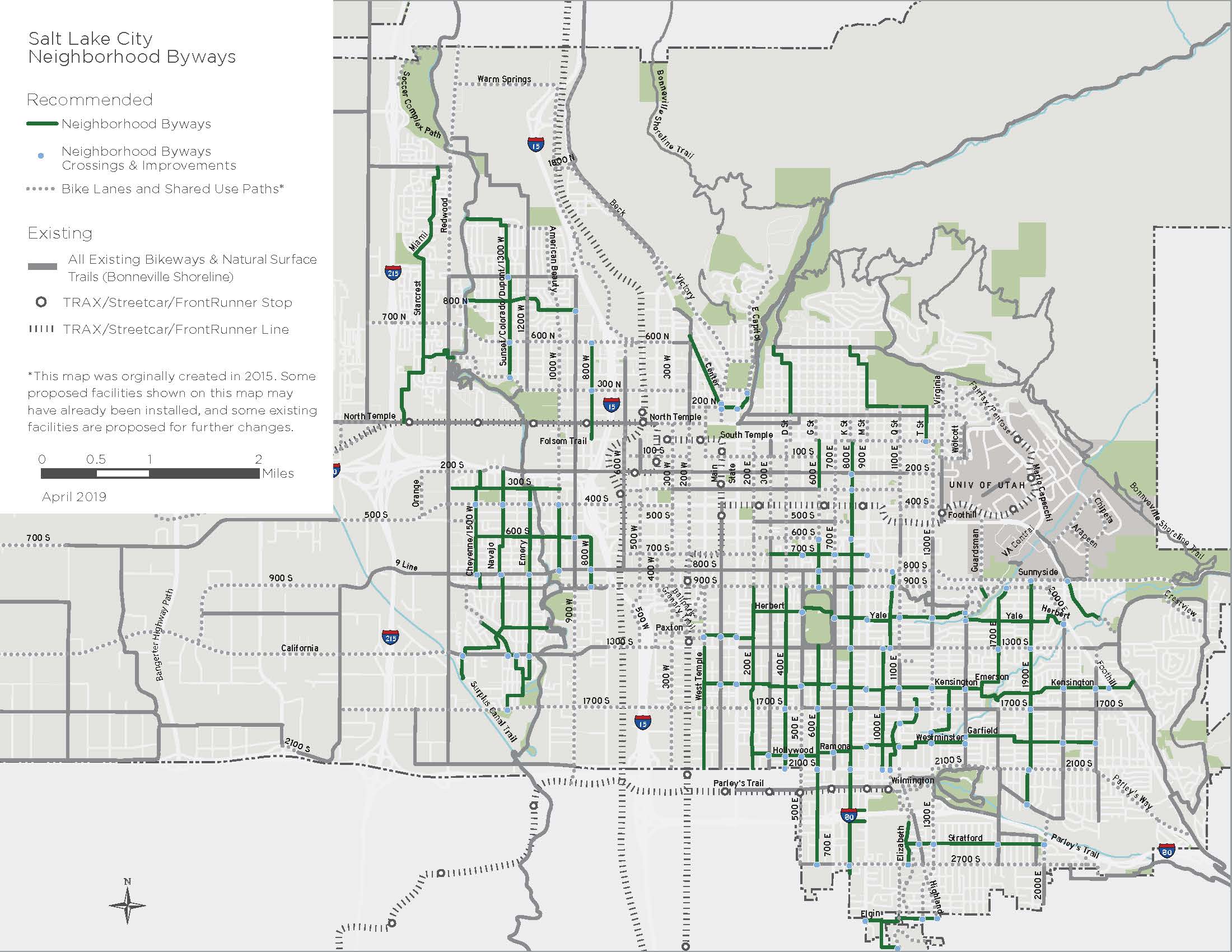
May 2025 Update
Construction begins the week of May 5, 2025. Initial work will include saw cutting and removal of pavement, with concrete pouring scheduled for the following week. Star Crest Drive just north of 400 North will require a soft closure during construction. View the finalized Byway design plans.
Overview
Salt Lake City is making it better for people of all ages and abilities to walk, bicycle, and roll along local streets. Neighborhood Byways create pleasant and convenient routes for people using active modes of transportation.
This Byway links the Jordan Meadows and Westpointe neighborhoods, passing near parks, schools, and connecting to destinations like the Jordan River Trail, Regional Athletic Complex, and the State of Utah employment center.
We’ve drafted designs for the Jordan Meadows Westpointe Byway using your feedback and extensive planning.
Learn More
Timeline
Timeline
Spring 2024: Announce preliminary designs and gather public feedback
Fall 2024: Final design
Summer 2025: Construction
Frequently Asked Questions
What is a Neighborhood Byway?
Neighborhood Byways create pleasant and convenient routes for walking, bicycling, rolling, and other active modes of transportation by encouraging safe travel speeds, discouraging cut-through vehicle traffic, providing safe crossings of busy streets, and connecting people to destinations.
How is a street chosen to be a Neighborhood Byway?
Neighborhood byways are identified in the Salt Lake City Pedestrian and Bicycle Master Plan and are commonly located along streets with the following characteristics:
- Narrow residential streets with low to modest vehicle traffic speeds and volumes
- Direct connections between parks, schools, businesses, and other community destinations
- Greening along the route such as shade trees
What changes are considered along these routes?
Infrastructure changes along these routes will be analyzed and vetted through a planning and public engagement process. Possible changes may include:
- Curb extensions (also known as bulb-outs) at the corners of the intersections to shorten the distance when crossing the street and help calm vehicle traffic
- Wayfinding signage and pavement markings to guide bicyclists along the byway
- Opportunities for additional greening such as street trees or landscaped medians
- Various traffic calming elements to slow vehicle speeds and discourage cut- through vehicle traffic, such as speed humps, traffic circles, and more
I live on a planned Neighborhood Byway. How will this affect getting to and from my home?
Neighborhood Byways create streets where residents can safely and comfortably bike, walk, and roll with children or pets. To create this safe and comfortable environment, some traffic calming improvements and minor street access modifications may be needed to manage vehicle speeds and prevent cut-through traffic. However, residents will still be able to easily access to their property.
How can I stay informed on the development of these Neighborhood Byways?
Join our Neighborhood Byways newsletter! You can also learn more by exploring the individual Neighborhood Byway pages on this website.
Can I drive my car on Neighborhood Byways?
Yes! While vehicles are not prohibited, Neighborhood Byways routes are improved for active modes of transportation such as walking and biking. The focus is on creating a network that enhances the experience for pedestrians and cyclists by ensuring safety and convenience.
Citywide Byways Map
The following Byway routes were identified in Salt Lake City’s Pedestrian and Bicycle Master Plan in 2015.
Byway Design Guide
The Salt Lake City Neighborhood Byways Design Guidelines provide a detailed framework for transforming local streets into safe and enjoyable routes for walking and biking. Emphasizing low-speed, low-traffic environments, the guidelines include strategies for route selection, intersection improvements, and traffic calming measures. The goal is to enhance connectivity, safety, and neighborhood livability, making active transportation more accessible and pleasant for all residents. Download the full guidelines to explore SLC’s vision for vibrant, connected communities.
Route Map
Contact Us
Stay in the loop by signing up for the Neighborhood Byways email list!
Project Manager | Will Becker
Email | JMWByway@slc.gov
